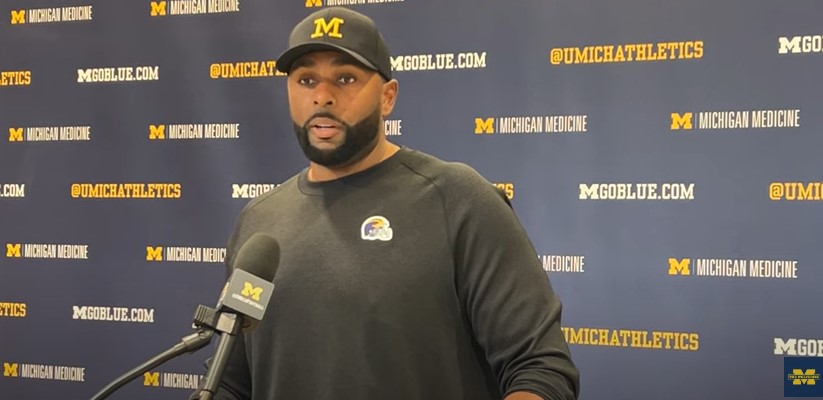
The Big Ten is making a significant adjustment to its officiating procedures in response to the controversial ending of Saturday’s game between the Michigan Wolverines and Minnesota Golden Gophers. The conference announced on Monday that it would be implementing a “modified officiating mechanic” aimed at improving the accuracy of calls, particularly during onside kicks, a critical moment in the Michigan-Minnesota game.
Under the new protocol, both the Line Judge and the Head-Line Judge will now be positioned on the kicking team’s restraining line during onside kicks. This adjustment is designed to give multiple officials a better vantage point, ensuring they have the best possible view when making decisions on plays that can heavily influence the outcome of a game. Previously, responsibility for determining offside calls on onside kicks was left to the umpire, which led to issues in the Michigan-Minnesota game that have now sparked this change.
The officiating modification comes directly in response to the ending of Saturday’s game, where the Golden Gophers were flagged for offside during an onside kick attempt late in the fourth quarter. This controversial call was pivotal, as Minnesota had been in position to potentially tie the game with just a minute and a half remaining. The penalty pushed them back, hindering their chances of regaining possession, and ultimately, they lost to Michigan 27-24.
While the Big Ten did not formally admit that the offside call was incorrect, the decision to revise its officiating mechanics suggests that there may have been at least some doubts about the accuracy of the call. The conference’s statement indicated that the change was driven by the events in the Michigan-Minnesota game, although they stopped short of explicitly acknowledging any errors made by the officials. However, the timing and nature of the adjustment point toward an acknowledgment that improvements are needed to avoid similar situations in the future.
Replays of the controversial onside kick provided little clarity. If Minnesota was indeed offside, it was difficult to detect, leading many observers, including fans and analysts, to question the validity of the flag. The call was met with sharp criticism, particularly because it came at such a crucial juncture in the game. Without the penalty, Minnesota would have been in prime position to recover the onside kick and potentially drive downfield to tie the score. Instead, the offside penalty derailed their momentum, sealing the win for Michigan.
The decision to implement this new officiating procedure signals the Big Ten’s recognition of the high stakes involved in late-game decisions and the need for greater oversight in such critical moments. Onside kicks are rare but can often serve as game-changing plays, particularly when a team is attempting a last-minute comeback. By ensuring that multiple officials are in position to monitor these plays, the conference hopes to minimize the potential for controversial calls moving forward.
In summary, the Big Ten’s move to modify its officiating mechanics in the wake of the Michigan-Minnesota game reflects an effort to enhance the accuracy and fairness of crucial game decisions. The controversial offside call, which played a key role in the game’s outcome, prompted this change, as the conference seeks to ensure that future games are decided with the most accurate and reliable officiating possible. While the Big Ten has not formally admitted fault in the call, the introduction of this new protocol indicates that the conference is taking steps to avoid similar controversies in the future.





